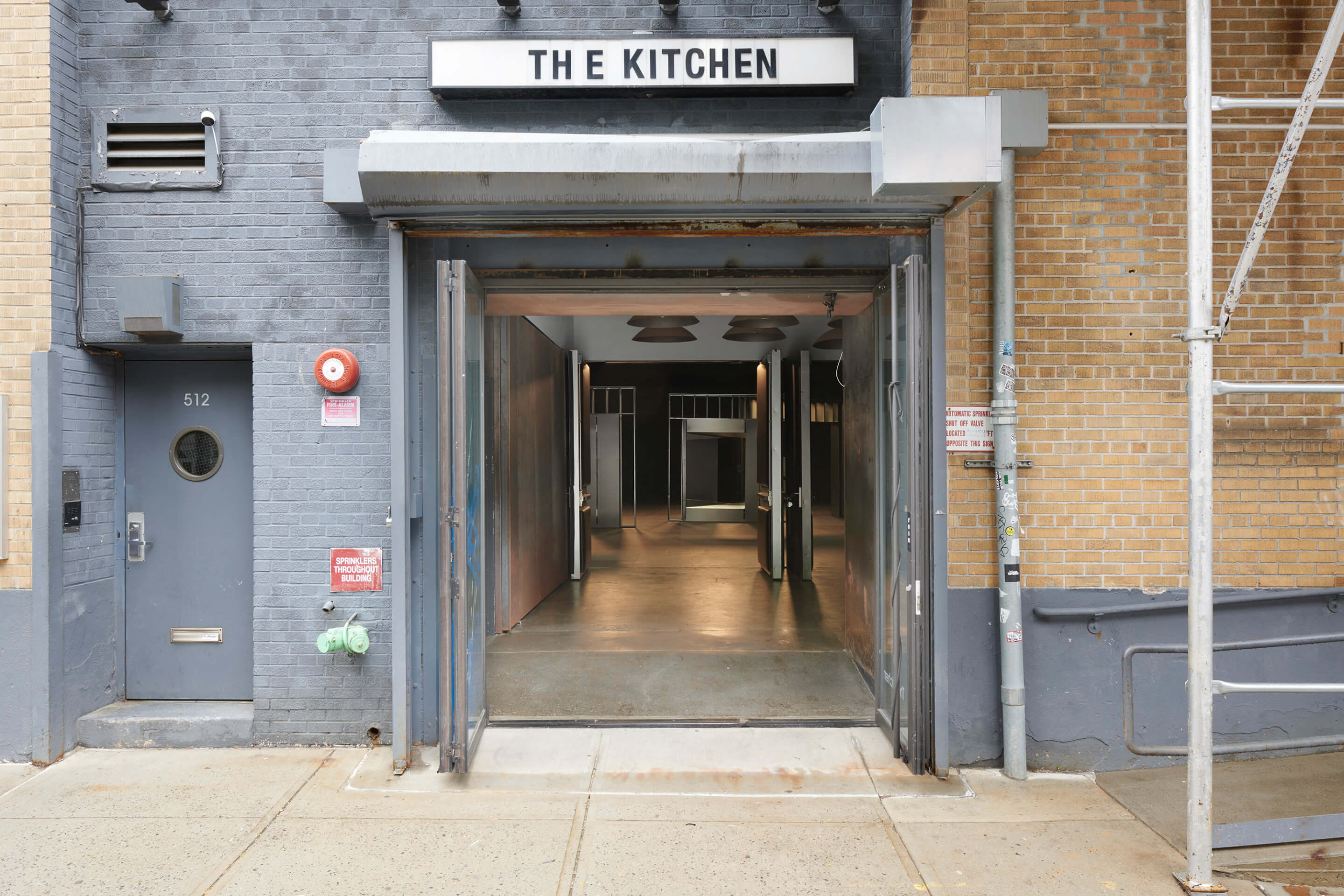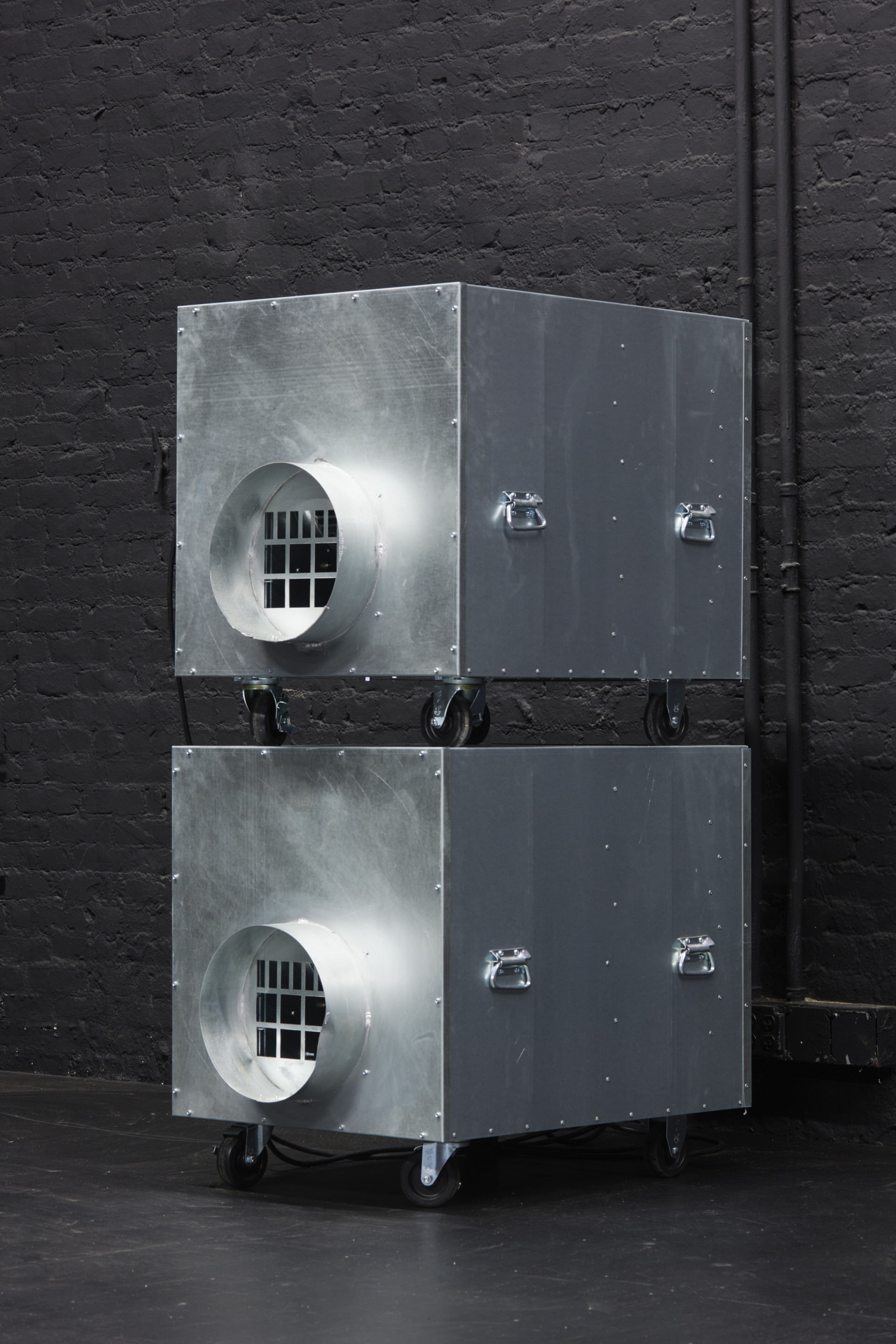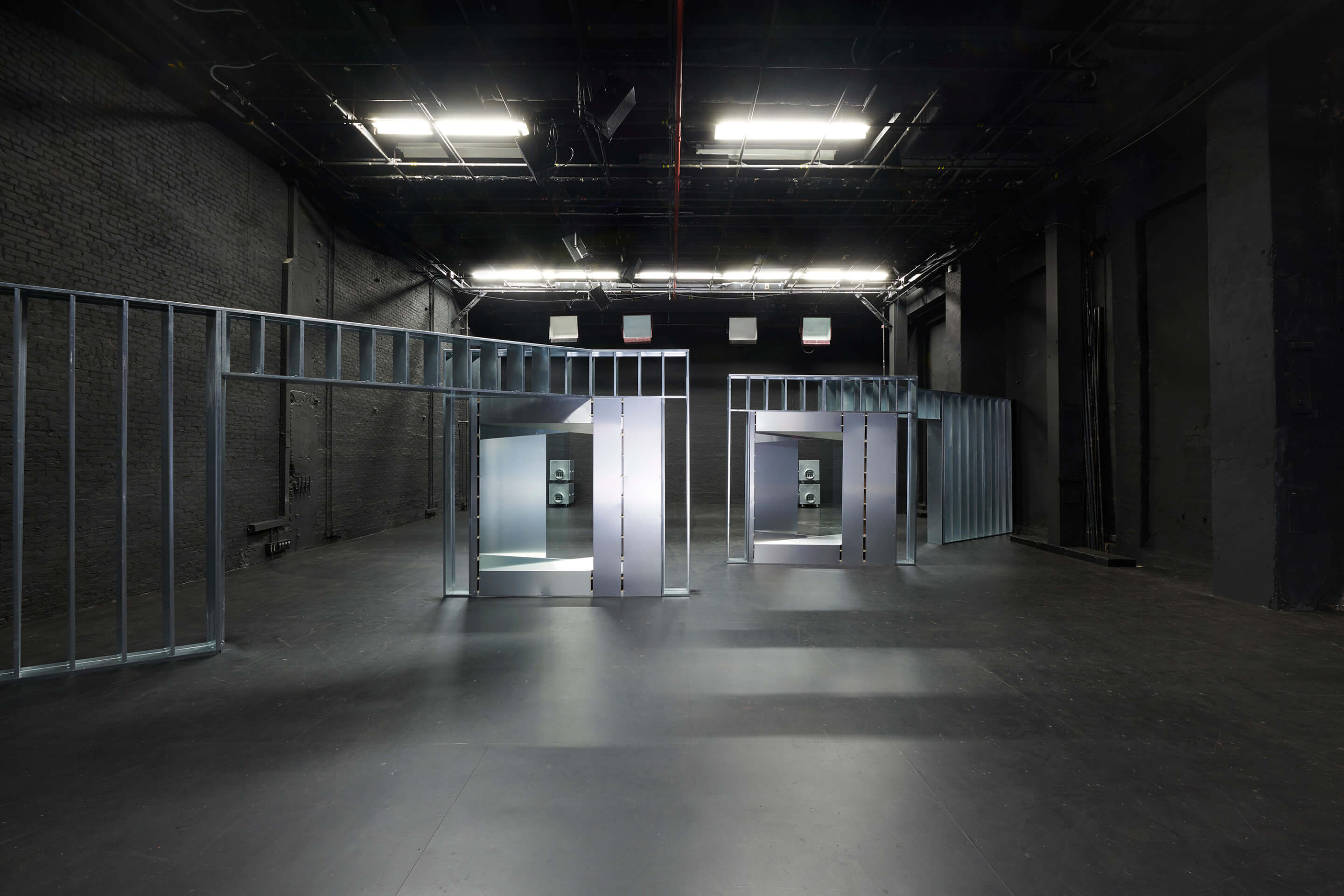Standing before the entrance to The Kitchen’s ground floor space on 19th Street in Chelsea, the presence of the advertised exhibition, Container and Contained, is uncertain. The doors to the lobby and theater beyond it are propped open, and one can see all the way through to the far wall of the performance space, where four large air purifiers produce a resonant hum as their fans blow clean air in the direction of the steel structures installed in the center of the space. Cutting diagonally across the room, the steel armatures resemble the skeletal framing of a residential or office building; titled WS-C-62A and WS-C-62B (2021), the angled positioning of their tracks renders them unable to support drywall, cementing their status as art rather than architecture. Simulated daylight automatically switches on at predetermined intervals each hour, and just before the exhibition closes every day at 6 pm, speakers in the rafters play a composition by Philip Glass, delineating the temporal boundary of public access.
Organized by Matthew Lyons, Container and Contained is the result of Alan Ruiz’s residency at The Kitchen and extends the artist’s ongoing engagement with the literal and ideological structures of institutional control. In advance of the opening, The Kitchen partnered with the New York Center for the Study of Groups, Organizations, and Social Systems to host an online forum led by Ruiz and Dr. Patrick Jean-Pierre, a psychologist who specializes in inter-organizational relations and systemic change. Titled Standards, Structures, and Institutions: Reimagining Authority, Value, and ______ in a World of Difference was a one-day event organized “in the Tavistock tradition,” an approach to social science that uses psychoanalysis and theory to examine the interpersonal dynamics of an organization on both conscious and unconscious levels. Nearly a month after the exhibition opened on June 17, Artforum published an “interview” with Ruiz about the show—a thousand-word text in which he provides an explanation of the exhibition and aforementioned forum.

By far the strongest work in Container and Contained is Transfer II (WS-B690-L40), a conceptual work wherein the artist leased The Kitchen’s 300 square feet of air rights at a rate of one dollar per month for a year. The lease is now registered in the Automated City Register Information System, rendering the work visible only through the city’s public archives. The lease has the potential to drastically depress the value of the building’s air rights, which could, in turn, affect the value of the luxury condos adjacent to The Kitchen.
Transfer II takes up the legacy of Hans Haacke’s Shapolsky et al. Manhattan Real Estate Holdings, A Real Time Social System, as of May 1, 1971, a collection of photos and records documenting 142 buildings owned by J. Shapolsky, a slumlord who owned tenements in Harlem, the East Village, and the Lower East Side, which he controlled through dozens of shell companies. Where Haacke’s work sought to expose the corruption of the landlord’s real estate dealings, Ruiz’s comes at the subject from the opposite direction, intervening in a gentrified neighborhood to ostensibly undercut the value of a building that hasn’t drastically changed since the institution moved into it in 1986.

Visitors who might not take the time to read the exhibition materials will find the installation anemic or opaque, while those passing on the street might not recognize the installation as art at all. Yet, this aspect of the project likewise presupposes an institutional awareness; those who regularly pass through the gallery-lined streets of Chelsea west of 10th Avenue are more than likely to be active in the art world in some capacity. While accessibility is always an issue with art that relies heavily on a conceptual framework, this aspect of the show resonates with the central conceit of the work, as the clandestine nature of real estate development likewise requires a fair amount of reading to comprehend. In terms of exhibition design—which, in this project, is synonymous with the art itself—the issue of accessibility is here raised to a higher power. Free and quite literally wide open to the public, Transfer II is subtle to the point of near-invisibility, achieving the artist’s stated aim to reveal the “formalism” of institutional frameworks.
Yet, while Ruiz’s project excels at laying the armatures of institutionalism bare, it fails to emphasize why our consideration of these structures is important. Haacke’s work was famously censored by the Guggenheim, sparking a boycott of the museum by over a hundred artists, but Ruiz’s installation questions the gentrifying powers that be rather quietly (albeit under the aegis of a far more progressive institution). Stating in Artforum that Transfer II is “oriented in an unpredictable future” in terms of market speculation, Ruiz asserts that his lease has the potential to depress the value of the building’s air rights, which is true, but the likelihood of this gesture having an appreciable impact on the neighboring real estate seems scant. Given the relatively small square footage of the lease and the development that has already occurred in the area, multimillion-dollar condo construction will likely, for the foreseeable future, continue apace.

Perhaps some or all of this was discussed in the Tavistock forum, but at $75 per ticket and no publicly available documentation of the event, that aspect of the exhibition remains obscured. The air purifiers cleansing the polluted air that wafts through the open doors aren’t installed in a way that helps the staff seated in the lobby, a choice that held a particularly poignant resonance as the haze from the West coast’s wildfires blanketed the city in unhealthy levels of smog earlier this week. Though Ruiz opted to install the visual components of his exhibition on the venue’s ground floor (rather than the second-floor gallery typically reserved for ongoing exhibitions) to underscore the building’s perpetual openness, the works’ installation in the performance space is apt, as the artist’s gestures are, at this point, all theater.
Container and Contained remains on display through July 31.











